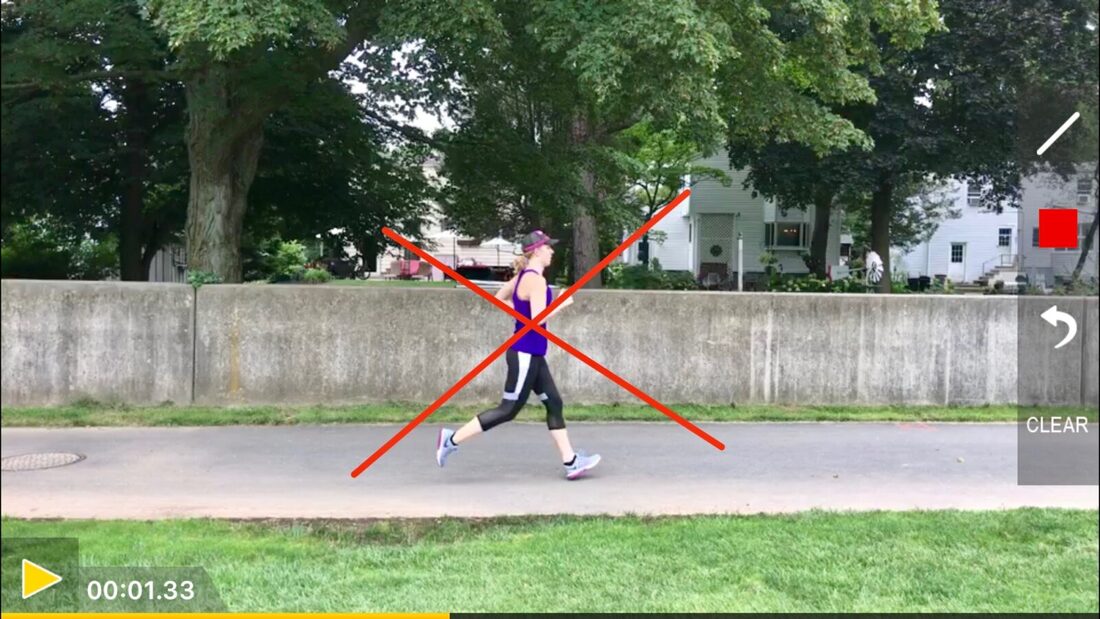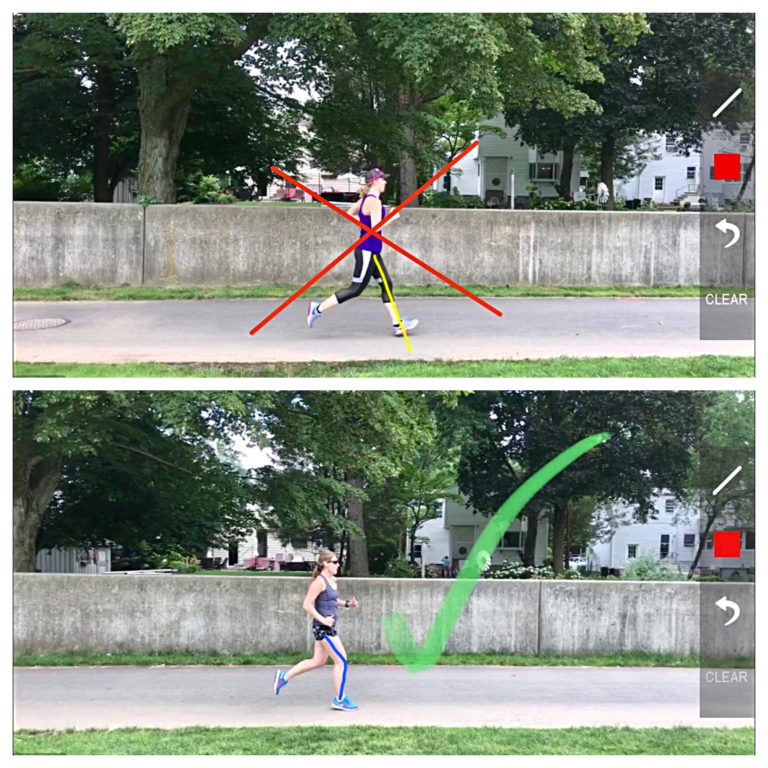|
3 Run Form Corrections You spend a lot of time working on your swim and bike technique, but how often do you think about your run form? Here are three of the most common errors triathletes make on the run and how to fix them to prevent injuries and run faster and more efficiently. 1. Straight Leg The way your leg looks when your foot lands is even more important than your foot strike. If you have a straight leg when your foot hits the ground, it is more difficult for your body to absorb the impact in a gentle manner. When you land this way, the shock of the impact is sent up your leg. After hundreds and thousands of steps, there’s a good chance you will fall victim to an overuse injury (ITB syndrome, runner’s knee, shin splits, etc.). Instead, try shortening your stride. The goal is for your foot to land underneath your body with a flexion knee as much as possible. When your leg is slightly bent upon impact your body can absorb the ground in a much more forgiving manner. Try this: Jump straight up in the air as high as you can. What part of your feet do you land on and what do your legs naturally do when landing? 2. Low Run Cadence Similar to cycling cadence, as you run, you should strive for a cadence of about 90 (or 180 for both feet). You may have noticed many elite marathoners appear to float along as they run, barely touching the ground and at a cadence in the high 90s. Run cadence is important for a couple reasons. First, the higher your cadence, the less amount of time your foot is on the ground. The less time your foot is on the ground, the less impact your body absorbs with each stride. Second, cadence is the same as stride rate. And stride rate multiplied by stride length equals speed. Stride Rate x Stride Length = Speed Most untrained athletes run at a cadence of about 80 (or 160 for both feet). If you can increase your cadence by just 5 steps per minute (per single foot) while holding your HR steady, you’ll be able to knock off 2 minutes over 10k. Anyone can have a high cadence when sprinting or running fast, but most cannot sustain that pace. The trick is learning to increase your cadence (or turnover) when running slow. This may sound paradoxical, but the first few times you practice increasing your cadence you will notice your HR is a little higher than normal (at the same pace). By keeping your pace extra slow you will still be able to run comfortably with your new, higher cadence. Eventually, your HR and body will adapt to the quicker foot turnover and you can slowly start to increase your pace. A couple tools you may find helpful include a Garmin watch or something similar that automatically counts your cadence as you’re running. Just make sure you set ‘cadence’ as one of your display fields. This same device will give you ‘average cadence’ at the end of your run so you can track progression over weeks and months of practicing. Another tool athletes find helpful is a metronome. This acts as an audible cue for you. Set the metronome to 180 beats. For each beat, one of your feet should be landing on the ground. You can download a free metronome app on your phone and run with it. Make sure you control your run pace when you do this. 3. Vertical Oscillation While watching people run it is not uncommon to see athletes with a bounce or spring in their step/stride. Vertical oscillation is the up and down movement that occurs with each stride. While everyone will “bounce” slightly when they run, the goal is to reduce this as much as possible. When it comes to endurance running, too much bounce wastes energy and decreases the distance forward with each stride. You can help reduce vertical oscillation by trying not to lift your knee so much when running. Instead, try to drive your knee forward in the direction you’re going and not up and forward (which will create extra oscillation and more work). For an extreme example, think about where your knee goes when you skip. Up! Admittedly, this can be a tricky concept to learn. When practicing, try to remind yourself to lean and push off with each stride. If you want to make it really simple, just tell yourself to ‘run smooth’ or pretend like you’re running with a glass of water on your head. Garmin has recently integrated advanced run metrics within their newer products. One of them measures vertical oscillation. While it is unclear on the exact number one should aim for, do your best to keep the number as low as possible. Check out some of the latest Garmin watches here. Would you like to become a better runner? We regularly work with athletes 1 on 1 to help improve run form.
To learn more about our 1 on 1 coaching sessions click here. If you would like to arrange a 1 on 1 session with one one of our coaches, please contact us. This article was originally published by USA Triathlon. You can find it here. Comments are closed.
|
Categories
All
Archives
July 2024
|
RTA TriathlonRTA is a comprehensive triathlon coaching organization and fully supported USAT sanctioned triathlon club.
We are based in Ridgewood, NJ and coach triathletes of all abilities from across the country. Our mission is to make you a better triathlete. Contact us when you're ready to take your "game" to the next level. |
|
|
Quick Links |
Let's get social
RTA Triathlon
Copyright © 2022
Copyright © 2022



 RSS Feed
RSS Feed
